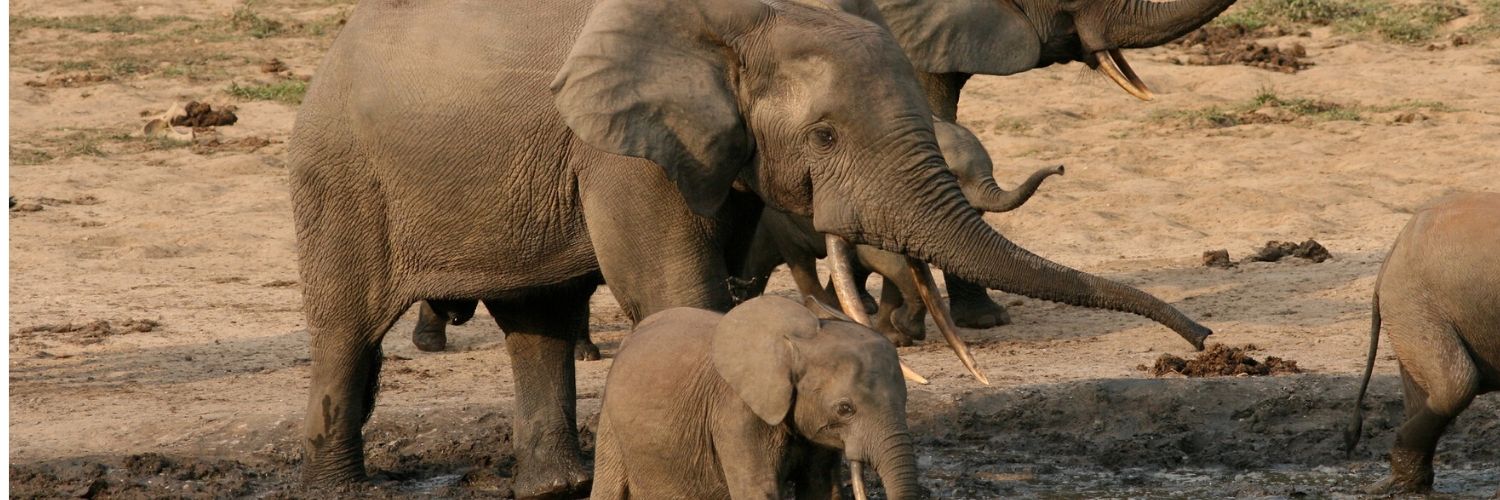Courtesy of Landscape News
Written by: Augusta Dwyer
As they move through the rainforest munching plants and shouldering aside small trees, Africa’s forest elephant might come across as an animal bent on mayhem. In fact, says Fabio Berzaghi, an ecologist at the Laboratory of Climate and Environmental Sciences in France and lead author of a recent paper in Nature Geoscience, forest elephants are hugely beneficial, providing “a tremendous ecosystem service by improving the carbon storage potential of central African forests.”
Smaller in size than its relative, the savanna elephant, the forest elephant has not been widely studied in the past, he says. Found in countries with relatively intact blocks of dense forest, they tend to roam in smaller groups and at lower densities than savanna elephants. They are usually observed only when visiting forest clearings, known as bais, to drink water.
So what, Berzaghi and his colleagues wanted to know, was their influence on the structure, productivity and carbon stocks of their forest habitat?
The scientists’ research had two main components. Fieldwork in two different sites in the Congo Basin, one from which elephants had disappeared and the other where they are still present, involved measuring all trees larger than 10 centimeters in diameter. “Then we identified each tree at the species level and for other properties such as wood density,” Berzaghi says, “which is quite important.”
The second phase made use of Ecosystem Demography 2 software that tracks the dynamics of forest function, such as biomass, vegetation height and carbon stock, and simulated elephant impact by increasing the mortality of smaller plants. They then compared the simulations with inventory data from the field studies. The resulting data showed that while there were fewer trees in areas inhabited by elephants, there was, conversely, a higher incidence of slow-growing, hardwood trees that store more carbon than fast-growing softwoods.
Basically, the elephants like to eat smaller tree species with less storage capability, thinning out the competition and favoring the high wood density trees in their quest for more light, water and other resources. This increase in aboveground biomass – 26 to 60 tons per hectare per more or less one elephant – leads to a corresponding increase in carbon storage.
What’s more, Berzaghi says, the elephant “not only thins the forest but disperses seeds widely, assisting the germination of more than 100 tree species, which provide food and habitat for primates, birds and insects.”
Extrapolating from their findings, however, the scientists zeroed in on another, more troubling statistic. If the forest elephant disappears entirely from its Central African home, forests there will lose seven percent of their biomass. That adds up to a 3-billion-ton loss of carbon – the equivalent of France’s entire CO2 emissions for 27 years.
Worse, such a disappearance is not altogether improbable. Scientists estimate that there were once as many as 1 million forest elephants in Africa, a number that is today a tenth or less of that. Between 2002 and 2011 alone, the species declined by 62 percent, according to a 2013 study in PLOS One. Functionally extinct in almost all of its former 220-million-hectare habitat, the environmentally helpful herbivore is still under siege by ivory poachers and forest encroachment.
Various conservation organizations, such as the World Wildlife Fund (WWF), are trying to protect both the elephant and its habitat. According to Thomas Breuer, the WWF’s program officer for Central and West Africa, the organization is working to address human elephant conflict. In the Sangha Trinational, a 750,000-hectare area that encompasses three contiguous national parks in Cameroon, the Republic of Congo and the Central African Republic, the WWF has adopted a landscape approach that “aims to work with extractive industries and other land users,” Breuer said in an email, “to ensure that forests are protected and that people can live in co-existence with forest elephants.
“In addition to tracking elephant movements or usage patterns related to bais,” he adds, “we also have various biomonitoring programs that track whether forest elephant populations are stable or declining. As we work on advocacy related to national and continent-wide elephant strategies, a key message is to underline the importance of forest elephants for ecosystems and the health and composition of the forests that people and wildlife depend on.”
For Berzaghi, his study’s findings could not be more consequential. “We actually have a direct connection between extinction, or a species that’s going towards extinction, and a global service we all need,” he says, “and not just African countries, but the whole world.”
Header Image Credit: Richard Ruggiero/USFWS







